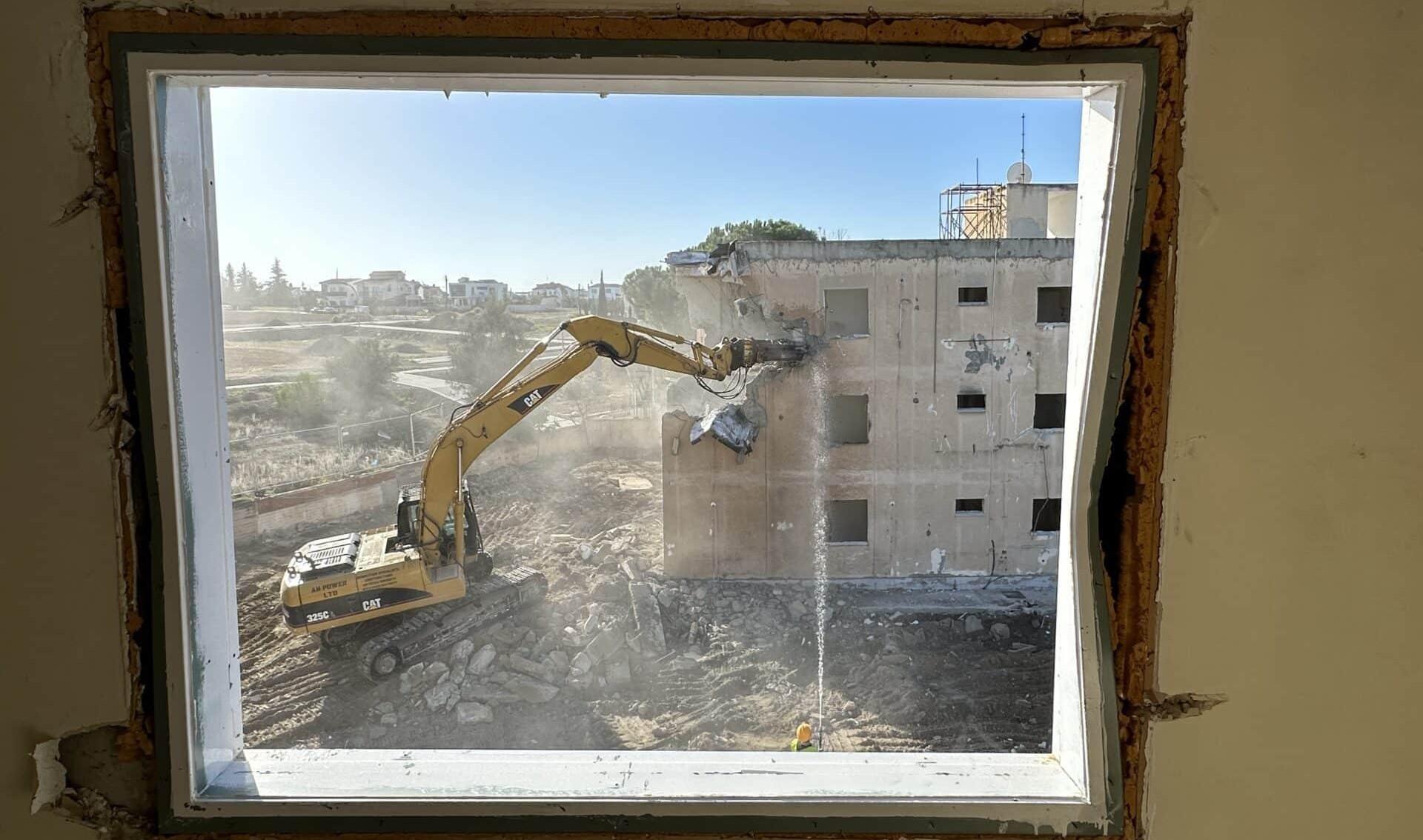A contract was signed on Friday 12 July for the demolition of two blocks of flats in the Kokkines state settlement in the Strovolos area of Nicosia, as part of the government's KtiZo programme.
The documents were certified by Kyriakos Koundouros on behalf of the Housing Ministry and by Savvas Petrou, director of S.P. TRANSPORT LTD, the contracting company.
The cost of the work is estimated at €29,981 plus VAT. The demolition is expected to be completed within four months. The project is part of the KtiZO programme. It is worth noting that the Nicosia district has previously demolished five blocks of flats in the government settlements of Agios Eleftherios and Apostolos Andreas.
At this stage, the Ministry of Housing has also issued three tenders for the demolition of another six blocks of flats in the Nicosia district. In addition, tender documents are being prepared for the demolition of the remaining seven blocks.

It should be recalled that at the beginning of March, the House Committee on Refugees expressed concern about the state of the buildings housing displaced persons from the occupied areas of the island.
In particular, it noted that they were not designed to withstand an earthquake and were generally uninhabitable. The Ministry of Urban Development, which is responsible for repairing these buildings, stated that it was not profitable to repair the houses because they were built with materials that were fifty years old.
There are currently 2,932 houses for Greek Cypriot refugees built on an area of 901,129 m2 owned by Turkish Cypriots. There are ten government settlements in Paphos, seven in Larnaca, eight in Limassol and seven in Nicosia. These properties are managed by a special service set up in 1991. Many of the properties are in very poor condition due to a lack of investment.
After long discussions, the Cypriot Minister of the Interior announced that the government will allocate €100 million for the renovation of emergency housing in refugee settlements. The renovation of the dangerous facilities will be carried out in stages. The large-scale project is expected to be completed within 10 years.
The plan drawn up by the Ministry covers 358 housing units. Initially, work will be carried out on 43 buildings that pose a particular risk. Each building will be repaired to the tune of 300,000 euros. Until the project is completed, the government intends to subsidise rents for people in need. The renovation programme will last 10 years. The tenants of the 43 most dangerous apartment blocks have already started to leave with the payment of the subsidy.
People have been offered two options:
temporarily move to another location and then receive an apartment in a new building that will replace their demolished complex; or
receive a lump sum compensation from the state for their property and their share of the land.
The Ktizo programme divides beneficiaries into three categories:
- Category 1 includes first generation refugees and second, third and fourth generation refugees who inherited emergency housing, if they have a housing title.
- Category 2 includes those refugees who bought properties in housing estates with money allocated to them by the state.
- Category 3 includes residents who bought a flat from refugees.
Residents of shelters who did not receive an apartment in a house built in place of the demolished one can claim compensation, the amount of which depends on the cadastral value of the property and land. If the shelter is to be repaired rather than demolished, the cost will be borne by the state.
